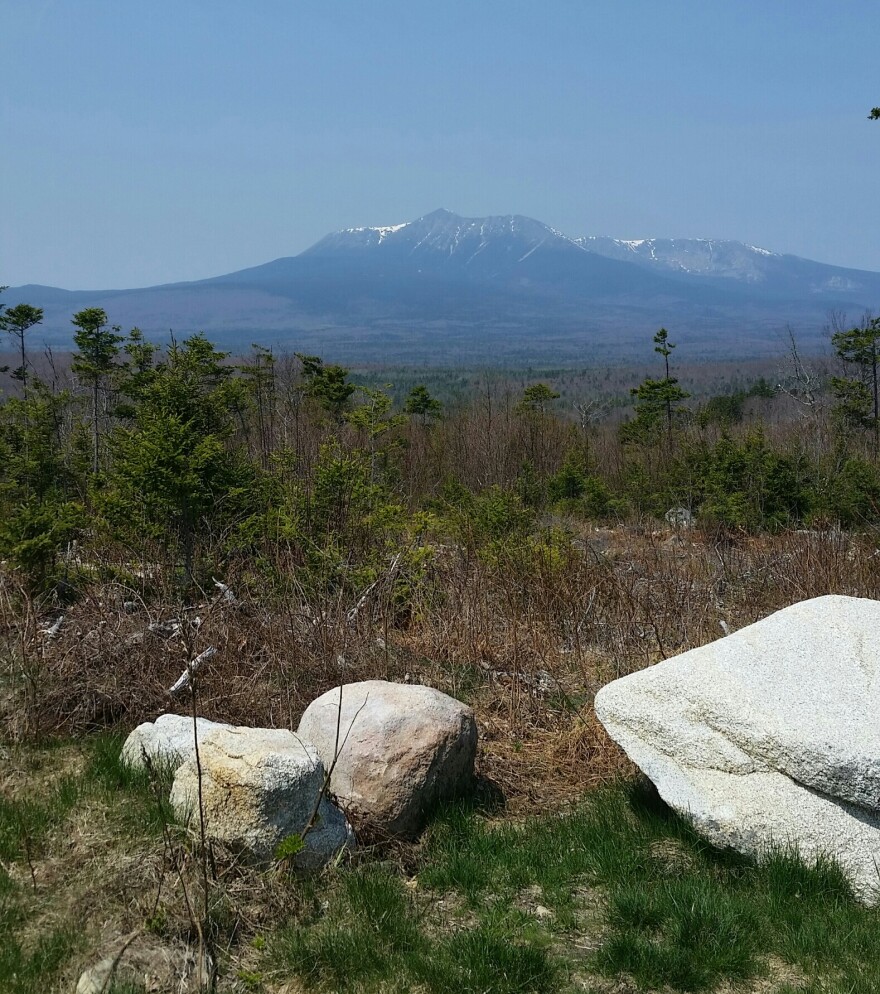It’s a question that has divided residents of Millinocket, East Millinocket and surrounding towns for years: how to breathe new life into an economy dependent on papermaking after the paper mills are gone. One possible answer is the creation of a national park.
Despite local and political opposition, statewide polls show strong support from Mainers. So proponents have revised their strategy. Instead of seeking congressional approval for a national park, they’re asking the president to consider designating privately owned land near Baxter State Park as a national monument, something he can do by proclamation.
Monday will mark a milestone for that effort with a visit by the director of the National Park Service.
Under the Antiquities Act established by Theodore Roosevelt, nearly every president has protected places of ecological, historical or cultural significance as national monuments.
Acadia National Park began as one in 1916. More recently, President Barack Obama has designated three in the California desert alone. In fact, since taking office, he’s protected more than 265 million acres of land and water, more than any other president.
Lucas St. Clair is hoping he’ll see something special in the Katahdin region, a region defined for more than century by papermaking. He is the president of Elliotsville Plantation, the foundation that is proposing to donate 90,000 acres along the East Branch of the Penobscot River as a national monument, something similar to a national park.
We’re standing at a scenic overlook and picnic area where vault toilets have recently been installed and a hiking trail is expected to be completed this summer. It’s a hazy day but beneath us is an expanse of intact forest, lakes and mountains.

“Obviously, that’s Mount Katahdin about six miles from us to the summit of Baxter Peak as the crow files. You can see the Turner mountains there to the north and that’s Millinocket Lake down to the south and the Hundred-Mile Wilderness kind of stretches to the the southwest,” he says.
St. Clair envisions a place where visitors can come to camp, hike, fish, bike and horseback ride in one part of the park. In another section they’d be able to hunt and ride snowmobiles and ATVs.
He has been working to build support for the idea for the past five years after his mother, philanthropist and entrepreneur Roxanne Quimby, stepped away from the project. She had become a lightning rod for opponents who resent the possible intrusion of the federal government.
Not far away, in the town of Millinocket, Louis Pelletier is the only town councilor who supports the creation of a national park.
“And I think it’s perfect. I mean it pulls the traffic up the 95 corridor further into Maine. More money’s gonna get spent getting them back out. And so, if they take a side trip to Millinocket, hey, so be it. That’d be great for us,” he says.
Pelletier says he campaigned for the council on the idea that taxes need to be lowered.

The Great Northern Paper mill that employed several thousand workers in the area in the ’70s and ’80s sits vacant at the end of Main Street. Many other downtown businesses have also closed. The nearby mill in East Millinocket, affectionately known as “the town that paper made,” has also been idled.
“The economic conditions are so bad in this town and has been for so long that we have to look at all ideas for improving our situation as long as they’re legal,” he says.
An economic analysis projects that a park could create at least 450 jobs, boost personal income and stem the out-migration of people. Over the past two decades about a third of the region’s population has been lost. But plenty of local residents still aren’t sold on the idea.

Michael Madore, a lifelong resident of Millinocket and three-term member of the Millinocket Town Council, says he opposes the park for several reasons. He doesn’t think the land is special enough to warrant protection.
“I mean there’s no grand canyon. There’s no geysers. There’s no caves,” he says.
And despite the fact that the Katahdin Region Chamber of Commerce is in favor, and has been for several years, Madore worries that its creation will doom the chances of recruiting other manufacturers to come to town.
“You’re not going to get somebody to invest millions of dollars into some type of manufacturing facility in here with the chance that that facility may be faced with major penalties or have demands put on them by the National Park Service or the federal government because now all of a sudden the game has changed,” he says.

But most of all Madore questions why National Park Service Director Jonathan Jarvis is planning to come to Maine for public meetings about the project when there are so few political leaders at the local, state or federal level who support it.
That may be about to change.
“I think I’ve moved from being opposed to being skeptical to listening,” says independent U.S. Sen. Angus King of Maine.
King invited the park director to Maine and has agreed to serve as moderator at several meetings. The largest one, at the University of Maine Monday evening, is expected to attract hundreds of people. Environmental groups have chartered buses for their supporters. Opponents are also organizing.
“It’s a contentious issue for sure and that’s why I thought it was important to get Director Jarvis up to Maine so he could hear from both sides,” he says.

Whatever happens, St. Clair is moving forward. On the East Branch of the Penobscot, once famous for massive log drives, there’s now a convenient boat launch for fishermen. Improvements are being made to the loop road every year. There’s hut-to-hut cross-country skiing in the winter. And more people than ever are coming out to the land to use it.
St. Clair is convinced that these woods that fueled the region’s economy for so long do have a future in a different way.
“What the Park Service really focuses on is telling the story of the American landscape and there’s an amazing story to be told here about the timber industry and the river drives and paper manufacturing,” he says.

Driving past a now idled chip mill, St. Clair says a national monument would be a way to honor northern Maine’s legacy. And he says 2016 would be a great time to do it. It’s the 100th anniversary of the creation of Acadia National Park and the 100th birthday of the National Park Service.
The meetings with Jarvis begin in Millinocket first thing Monday morning.



